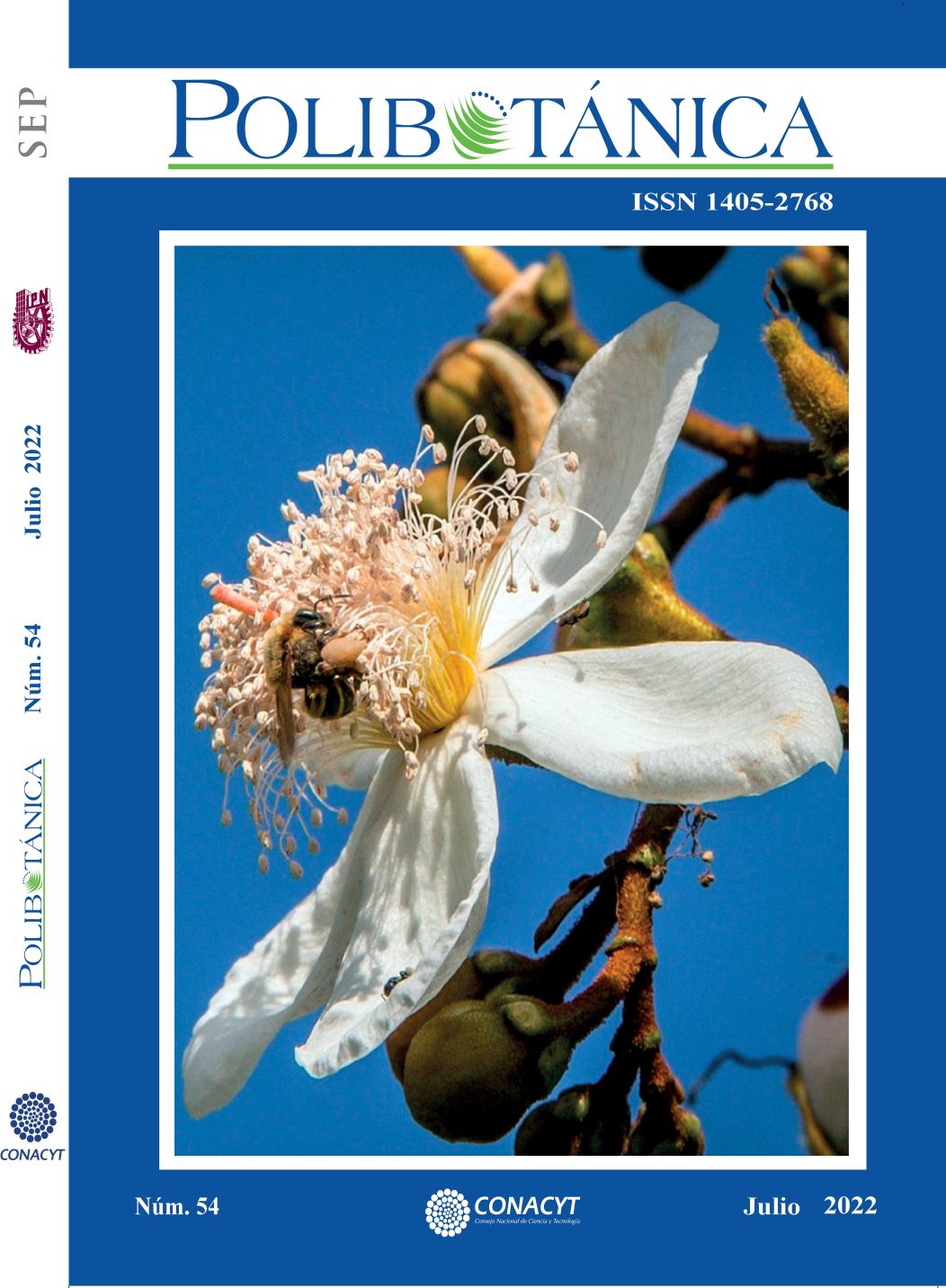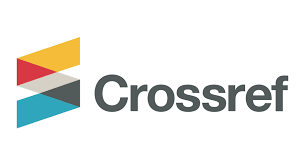Evaluation of the hypoglycemic effect of Tectaria heracleifolia (Willd.) Underw. in mice with induced type 2 diabetes
DOI:
https://doi.org/10.18387/polibotanica.54.13Keywords:
“hierba del sapo”, Tectaria heracleifolia, Type 2 diabetes, Acute toxicityAbstract
Diabetes is a major global health concern. About 463 million people worldwide live with diabetes. Type 2 diabetes mellitus (T2DM) is the most common in 90% of cases, it presents as hyperglycemia in the blood and a deficiency in insulin secretion by the pancreas. Oral antidiabetics are part of the treatment to reduce and control this metabolic disorder; however, they have side effects. People with diabetes use medicinal plants before medication is prescribed or together with the medication. Tectaria heracleifolia (Willd.) Underw. is a fern that has been reported in ethnobotanical studies to treat renal disorders, acne, and diabetes. This study is the first to evaluate the in vivo hypoglycemic effect of T. heracleifolia in mice with streptozotocin-induced T2DM using the commercial oral hypoglycemic agent glibenclamide as a positive control. Tests were conducted using normoglycemic mice and hyperglycemic mice. The doses of 30, 100, and 300 mg/kg of the aqueous extract of T. heracleifolia were orally administered to mice and glucose assessment was performed at the following time points: 0, 1.5, 3, 5, and 7 h after extract administration. Acute toxicity tests were performed based on Lorke's methodology (Lorke, 1983). Qualitative tests were performed to detect the main groups of secondary metabolites such as alkaloids, glycosides, terpenes, and flavonoids. In the hyperglycemic animals, a statistically significant difference (p <0.05) was observed in the groups that received 100 mg/kg and 300 mg/kg of the aqueous extract when compared to the negative control (0.9% saline solution). The hypoglycemic activity is related to the presence of glycosides, phenolic compounds, and flavonoids in the aqueous extract. The extract is considered safe as the acute toxicity test showed a median lethal dose value (LD50) of 5065.177 mg/kg. The findings of the study validate the traditional use of T. heracleifolia as a hypoglycemic agent in T2DM.
References
Andrade-Cetto, A. (2009). Ethnobotanical study of the medicinal plants from Tlanchinol, Hidalgo, México. Journal of Ethnopharmacology, 122(1), 163–171. https://doi.org/10.1016/j.jep.2008.12.008
Andrade-Cetto, A., & Heinrich, M. (2005). Mexican plants with hypoglycaemic effect used in the treatment of diabetes. In Journal of Ethnopharmacology (Vol. 99, Issue 3, pp. 325–348). https://doi.org/10.1016/j.jep.2005.04.019
Andrade-Cetto, A., Wiedenfeld, H., Revilla, M. C., & Sergio, I. . (2002). Hypoglycemic effect of Equisetum myriochaetum aerial parts on type 2 diabetic patients. Journal of Ethnopharmacology, 81, 117–120. https://doi.org/https://doi.org/10.1016/S0378-8741(02)00053-3
Andrade, A., Wiedenfeld, H., Revilla, C., & Islas, S. (2000). Hypoglycemic effect of Equisetum myriochaetum aerial parts on streptozotocin diabetic rats. Journal of Ethnopharmacology, 72, 129–133. https://doi.org/https://doi.org/10.1016/S0378-8741(00)00218-X
Avelino-Flores, M. C. ., Bibbins-Martínez, M. ., Vallejo-Ruiz, V., & Reyes-Leyva., J. (2019). Evaluación in vitro de la actividad citotóxica y antitumoral de plantas medicinales recomendadas en Cuetzalan del Progreso, Puebla, México. Polibotánica, 47(46), 113–135. https://doi.org/10.18387/polibotanica.47.9
Breite, L. D., Steck, M., Cutshall, B. T., Shah, S. P., & Cave, B. E. (2020). Changing Fields-Diabetes Medications Invading the Cardiovascular Space. In Current Problems in Cardiology (p. 33). Elsevier Inc. https://doi.org/10.1016/j.cpcardiol.2020.100736
Brosius, F. (2015). Low-Dose Streptozotocin Induction Protocol (Mouse). Diabetic Complications Consortium, 1–3.
Cañigueral, S., & Vila, R. (2005). La Fitoterapia como herramienta terapéutica. May 2014.
Castrejón-Arroyo, K. D. J., Sánchez-Córdova, Á. D. J., Capataz-Tafur, J., Sánchez-Ocampo, P. M., & Huerta-Heredia, A. A. (2016). Contenido total de fenoles y flavonoides, actividad antioxidante y anti-inflamatoria de extractos crudos de Tectaria heracleifolia. Mexican Journal of Biotechnology, 1(1), 42–50.
Castro, A., Chosquesillo, F., Félix, L., Milla, H., Bell, C., Catro, N., Palomino, R., Amas, S., Ramos, N., & Calderon, A. (2002). Investigación de metabolitos secundarios en plantas medicinales con efecto hipoglucemiante y determinación del cromo como factor de tolerancia a la glucosa. Ciencia e Investigación, 1, 23–29.
Castro, J., Villa, N., Ramírez, S., & Mosso, C. (2014). Uso medicinal de plantas antidiabéticas en el legado etnobotánico oaxaqueño. Revista Cubana de Plantas Medicinales, 19(1), 101–120.
Cristians, S., Osuna, H., Ramírez, G., Muñóz, V., Laguna, G., & Brechú, A. E. (2015). Euphorbia dioeca Kunth as a novel source for α-glucosidase inhibitors. Boletin Latinoamericano y Del Caribe de Plantas Medicinales y Aromaticas, 14(6), 483–490.
Norma Oficial Mexicana, Especificaciones técnicas para la producción, cuidado y uso de los animales de laboratorio, NOM-062-ZOO-1999 107 (2001).
Domínguez, X., & Alcorn, J. (1985). Screening of medicinal plants used by huastec mayans of northeastern mexico. Journal of Ethnopharmacology, 13, 139–156. https://doi.org/10.1016/0378-8741(85)90002-9
Ekoé, J.-M. (2019). Diagnosis and Classification of Diabetes Mellitus. In Encyclopedia of Endocrine Diseases (2nd ed., Vol. 1, pp. 105–109). Elsevier. https://doi.org/10.1016/B978-0-12-801238-3.65822-1
Gordillo, G. C., Negrón, L. P., Zúñiga, T. H., Flores, E., Moreyra, R., Fuertes, C., Guerra, G. A., Apesteguía, A., & Quintana, A. M. (2012). Efecto hipoglicemiante del extracto acuoso de las hojas de Smallanthus sonchifolius (yacón) en pacientes con Diabetes Mellitus Tipo 2. Ciencia e Investigación, 15(1), 42–47.
Gupta, N., Gudipati, T., & Prasad, G. B. K. S. (2018). Plant Secondary Metabolites of Pharmacological Significance in Reference to Diabetes Mellitus : An Update. International Journal of Current Microbiology and Applied Sciences, 7(05), 3409–3448. https://doi.org/https://doi.org/10.20546/ijcmas.2018.705.398
Ho, R., Teai, T., Bianchini, J., & Lafont, R. (2011). Ferns : From Traditional Uses to Pharmaceutical Development , Chemical Identification of Active Principles. In A. Kumar, H. Fernández, & M. Revilla (Eds.), Working with Ferns: Issues and Applications (pp. 321–346). Springer Science Business Media. https://doi.org/10.1007/978-1-4419-7162-3
Hu, C., & Jia, W. (2019). Therapeutic medications against diabetes : What we have and what we expect. Advanced Drug Delivery Reviews, 139, 3–15. https://doi.org/10.1016/j.addr.2018.11.008
IDF. (2019). Atlas de la diabetes de la FID (P. S. Suvi Karuranga, Belma Malanda, Pouya Saeedi (ed.); 9th ed.).
Johnson, M. A. A., Madona, C. X., Almeida, R. S., Martins, N., & Coutinho, H. D. M. (2020). In vitro toxicity, antioxidant, anti-inflammatory, and antidiabetic potential of Sphaerostephanos unitus (L.) holttum. Antibiotics, 9(6), 1–13. https://doi.org/10.3390/antibiotics9060333
Lorke, D. (1983). A New Approach to Practical Acute Toxicity Testing. Archives of Toxicology, 54, 275–287.
Manivannan, V., & Johnson, M. (2020). Total accepted phenolic, tannin, triterpenoid, flavonoid and sterol contents, anti-diabetic, anti-inflammatory and cytotoxic activities of Tectaria paradoxa (Fee.) Sledge. Toxicology Reports, 7, 1465–1468. https://doi.org/10.1016/j.toxrep.2020.10.013
Martinez, M. A. (1984). Medicinal plants used in a totonac community of the Sierra Norte de Puebla: Tuzamapan de Galeana, Puebla, México. Journal of Ethnopharmacology, 11, 203–221.
Masiello, P., Broca, C., Gross, R., Roye, M., Manteghetti, M., Hillaire-Buys, D., Novelli, M., & Ribes, G. (1998). Development of a New Model in Adult Rats Administered Streptozotocin and Nicotinamide. Diabetes, 47(February), 224–229.
Mata-Torres, G., Andrade-Cetto, A., Espinoza-Hernández, F. A., & Cárdenas-Vázquez, R. (2020). Hepatic Glucose Output Inhibition by Mexican Plants Used in the Treatment of Type 2 Diabetes. Frontiers in Pharmacology, 11, 1–9. https://doi.org/10.3389/fphar.2020.00215
Mata, R., Cristians, S., Escandón, S., Juárez, K., & Rivero, I. (2013). Mexican antidiabetic herbs: Valuable sources of inhibitors of α-glucosidases. Journal of Natural Products, 76(3), 468–483. https://doi.org/10.1021/np300869g
OECD. (2001). Test No. 423: Acute Oral toxicity - Acute Toxic Class Method. Oecd Guideline for Testing of Chemicals, 1–14. https://doi.org/10.1787/9789264071001-en
Paul, T., Biswadeep, D., Kishori, G. A., Suchitr, B., & Ramesh, C. S. (2012). Evaluation of Anti-Hyperglycemic Activity of Adiantum Philippense Linn, a Pteridophyte in Alloxan Induced Diabetic Rats. Journal of Diabetes & Metabolism, 03(09), 1–8. https://doi.org/10.4172/2155-6156.1000226
Powers, A., Niswender, K., & Evans-Molina, C. (2018). Diabetes mellitus: diagnóstico, clasificación y fisiopatología. In J. Jameson, A. S. Fauci, D. L. Kasper, S. L. Hauser, D. L. Longo, & J. Loscalzo (Eds.), Harrison. Principios de Medicina Interna (20e ed., pp. 1–20). McGraw Hil. https://accessmedicina-mhmedical-com.pbidi.unam.mx:2443/content.aspx?bookid=2461§ionid=213018745
Punthakee, Z., Goldenberg, R., & Katz, P. (2018). Definition, Classification and Diagnosis of Diabetes, Prediabetes and Metabolic Syndrome. Canadian Journal of Diabetes, 42, S10–S15. https://doi.org/10.1016/j.jcjd.2017.10.003
Rao, K. T., Reddy, K. N., & Pattanaik, C. (2007). Ethnomedicinal Importance of Pteridophytes used by Chenchus of Nallamalais , Andhra Pradesh , India. Ethnobotanical Leaflets, 11, 6–10.
Romo, G. (2013). Estudio de las plantas silvestres con uso medicinal en La Encantada, municipio de Cazones de Herrera, Veracruz [Universidad Nacional Autónoma de México]. http://132.248.9.195/ptd2013/enero/0687607/0687607.pdf
Salehi, B., Ata, A., Kumar, N. V. A., Sharopov, F., Ramírez-Alarcón, K., Ruiz-Ortega, A., Ayatollahi, S. A., Fokou, P. V. T., Kobarfard, F., Zakaria, Z. A., Iriti, M., Taheri, Y., Martorell, M., Sureda, A., Setzer, W. N., Durazzo, A., Lucarini, M., Santini, A., Capasso, R., … Sharifi-Rad, J. (2019). Antidiabetic potential of medicinal plants and their active components. Biomolecules, 9(10), 1–121. https://doi.org/10.3390/biom9100551
Secretaria de Salud. (2019). Anuarios de Morbilidad. Distribucion de casos nuevos de enfermedades por grupos de edad. Estados Unidos Mexicanos 2019. Poblacion General. https://epidemiologia.salud.gob.mx/anuario/2019/morbilidad/nacional/distribucion_casos_nuevos_enfermedad_grupo_edad.pdf
Seetaloo, A. D., Aumeeruddy, M. Z., Rengasamy Kannan, R. R., & Mahomoodally, M. F. (2019). Potential of traditionally consumed medicinal herbs, spices, and food plants to inhibit key digestive enzymes geared towards diabetes mellitus management — A systematic review. South African Journal of Botany, 120, 3–24. https://doi.org/10.1016/j.sajb.2018.05.015
Surya, S., Salam, A. D., Tomy, D. V., Carla, B., Kumar, R. A., & Sunil, C. (2014). Diabetes mellitus and medicinal plants a review. Asian Pacific Journal of Tropical Disease, 4(5), 337–347. https://doi.org/10.1016/S2222-1808(14)60585-5
Tanzin, R., Rahman, S., Md. Shakhawat Hossain Bipasha, A. Z. K., Jahan, S., & Md. Moshiur, Rahman Sadia Moin Mou Mohammed, R. (2013). Medicinal potential of pteridophytes – an antihyperglycemic and antinociceptive activity evaluation of methanolic extract of whole plants of Christella dentata. Advances in Natural and Applied Sciences, 7(1), 67–73.
Vieira, G. T., de Oliveira, T. T., Carneiro, M. A. A., Cangussu, S. D., Humberto, G. A. P., Taylor, J. G., & Humberto, J. L. (2020). Antidiabetic effect of Equisetum giganteum L. extract on alloxan-diabetic rabbit. Journal of Ethnopharmacology, 260(May), 1–17. https://doi.org/10.1016/j.jep.2020.112898
Zamora-Martínez, M. C., & Nieto de Pascual, C. (1992). Medicinal plants used in some rural populations of Oaxaca , Puebla and Veracruz , Mexico. Journal of Ethnopharmacology, 35, 229–251.
Zárate, A., Islas, S., & Saucedo, R. (2014). Eficacia y efectos adversos de los antidiabéticos orales. Gaceta Médica de México, 150, 5–7.
Zhu, K., Meng, Z., Tian, Y., Gu, R., Xu, Z., Fang, H., Liu, W., Huang, W., Ding, G., & Xiao, W. (2021). Hypoglycemic and hypolipidemic effects of total glycosides of Cistanche tubulosa in diet/streptozotocin-induced diabetic rats. Journal of Ethnopharmacology, 113991. https://doi.org/10.1016/j.jep.2021.113991
Downloads
Published
Issue
Section
License

Polibotánica by Departamento de Botánica de la Escuela Nacional de Ciencias Biológicas del Instituto Politécnico Nacional se distribuye bajo una Licencia Creative Commons Atribución-NoComercial-CompartirIgual 4.0 Internacional.




















